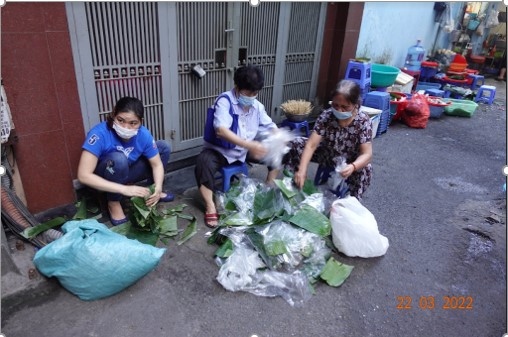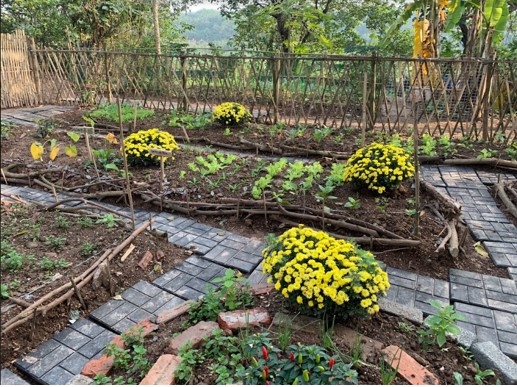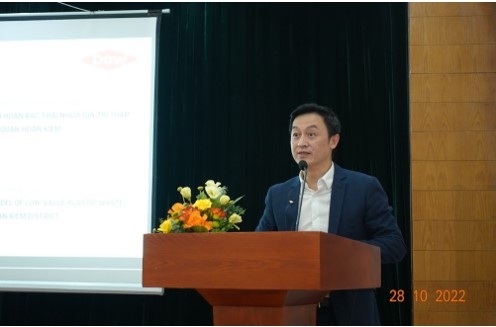Circular economy: Changing the plastic trash into resources
VOV.VN - After more than 1 year of piloting the circular economy model in 6 wards of Hoan Kiem district (Hanoi Capital), including: Hang Dao, Hang Bac, Hang Buom, Hang Trong, Cua Dong and Phuc Tan, there are more than 7,000 households directly participating in waste classification.
At the end of October, the “Experience sharing and result handing over” seminar for the “Community-based plastic waste circular economy model in Hoan Kiem District” project (hereafter called Project) officially took place.
Sponsored by Dow Chemical Vietnam Co., Ltd, the Project is an effort of the People's Committee of Hoan Kiem district and the Center for Environment and Community Research (CECR) to cooperate in handling the problem of plastic pollution. The Project launched from June, 2021, to June 30, 2022, aiming to implement the Plan 95 of District on the Implementation of the Plastic waste reduction Program and the Plastic waste circular economy in Hoan Kiem District; contributing to complying with the implementation of the Law on Environment Protection 2020, towards a circular economy of waste resources.

Mr. Nguyen Anh Quan, Permanent Vice Chairman of Hoan Kiem District People's Committee said: “The Project has recognized the positive results of the circular economy model in the management, treatment of plastic waste and waste classification at source. At the same time, the Project also shows a meaningful contribution to the process of raising public awareness about the circular economy model in Vietnam.”
After more than 1 year of piloting the circular economy model in 6 wards of Hoan Kiem district, including: Hang Dao, Hang Bac, Hang Buom, Hang Trong, Cua Dong and Phuc Tan, there were more than 8000 households in 06 wards were trained on classifying low-value plastic waste at source, 7000 households directly participated in waste classification. At the end of the collecting process, at URENCO Hoan Kiem's warehouse, there was a total of 16,150 kg (approximately 16 tons) of low-value plastic waste. All of the classified low-value plastic waste will be transported to production facilities of recycling companies Vietcycle and Vinacolour, ready to be "reborn" into useful materials such as plastic beads, tiles, etc.

As a sponsor of the entire project and at the same time, a materials science company and an innovative and creative solutions provider, Mr. Ekkasit Lakkananithiphan, President of Dow Vietnam shared: “With the goal of promoting circular economy in Vietnam, the highlight of this Project is collecting, processing, and recycling low-value plastic waste. We believe that this is a meaningful pilot project for the circular economy model, demonstrating its efficacy and creating a foundation for widespread application in Vietnam from here.”
"The Community-Based Circular Waste Economy Model in Hoan Kiem District" has learned many important lessons as a pioneering project. One of them is that behavior-change-communication requires the participation of a whole system, because changing people's inherent behavior is a difficult task. Besides, many improvements are needed in order to organize recycling and collection companies into a complete and coordinated recycling chain. In addition, the project also recognizes difficulties in consuming recycled products, due to the lack of markets as well as policies for these recycled products.

The representative of Center for Environment and Community Research (CECR) also shared at Workshop: The cycle of garbage collection, transportation, and disposal must be finished in 24 hours and repeated continuously. People don’t want to keep trash in the house for too long, so it should be collected daily, or every 24 hours, for burial. For a brief period of time, but continuously, the system and behavior must work together and function smoothly. This is also a constraint and a significant obstacle in waste management. The workshop also made some suggestions on other supporting factors to be able to replicate the model in Hanoi. Such as the application of digitalization and information technology to the process; and promoting the production and consumption of recycled products to the markets.
Sponsored by Dow Chemical Vietnam Co., Ltd, the Project is jointly implemented by the People's Committee of Hoan Kiem district and the Center for Environment and Community Research (CECR). The structure of the model in this Project includes a community-based 3R practice: Recyclable plastic wastes and low-value plastic wastes will be classified by households, then Hoan Kiem URENCO workers will be collected and gathered at URENCO's warehouse (Lam Du warehouse). Plastic wastes will then be taken to the recycling plant and manufactured, becoming new products.
The project aims to raise awareness and responsibility for the community, businesses, and organizations of all levels in classifying, collecting, recycling and transporting to management and recycling places in accordance with the law on environmental protection and the regulation on segregating waste at source. As a result, it helps the government advance the circular economy by reusing and recycling plastic products to contribute to sustainable economic development, social welfare, and environmental protection.
